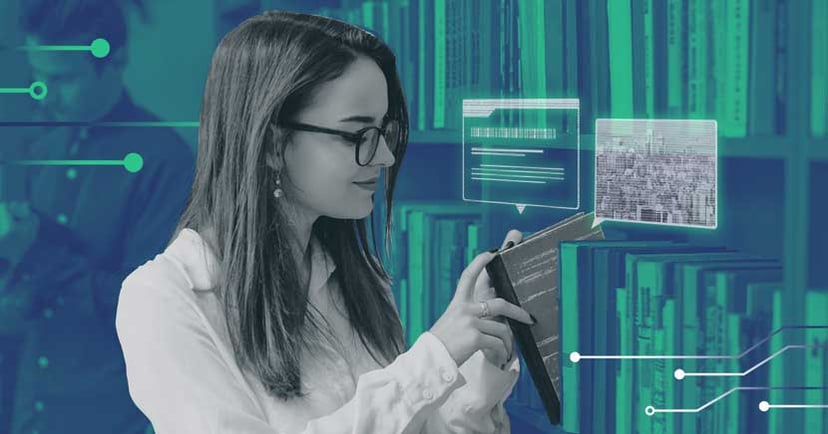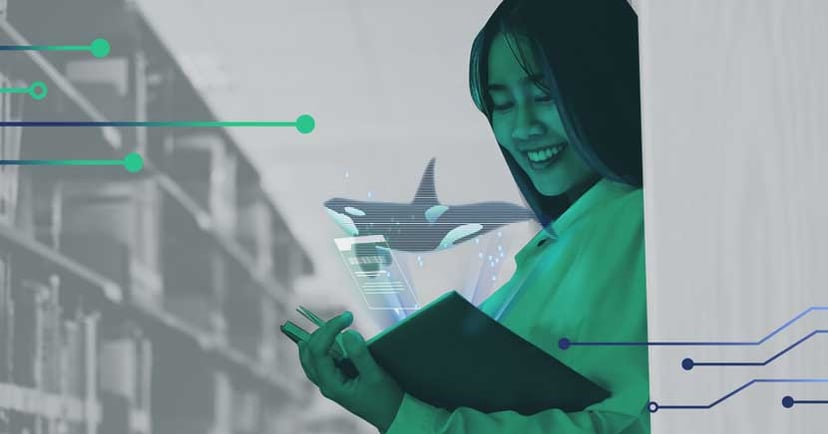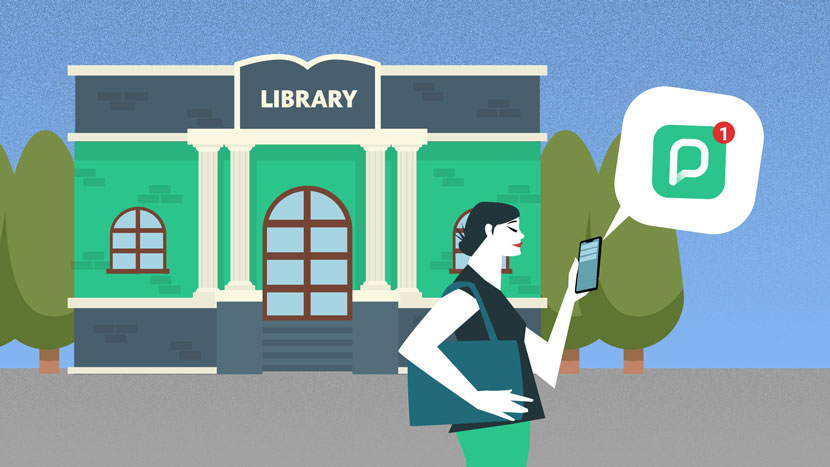Librarians prepare for the future by accelerating their adoption of different technologies
The deserted library?
With apologies to the spirit of Mark Twain, reports of the death of the academic library have been exaggerated. The Chronicle of Higher Education published one of the most prominent of those reports in 2001, under the headline “The Deserted Library”.
In that article, reporter Scott Carlson noted that students’ ability to find more and more of the research materials they need online was calling the continued need for academic libraries into question. “University libraries bring to mind undergraduates rooting through dusty stacks or sitting in reading rooms with their noses buried in tomes,” Carlson wrote. “These days, however, more and more students are entering libraries not through turnstiles but through phone lines and fiber-optic cables.”
As it turns out, however, far from delivering a death blow, the development and adoption of digital information technology has become a key part of keeping academic libraries alive and vital.
See also:
- The evolving role of librarians: how is library leadership changing?
- The impacts of advanced technology on libraries and education
- Is hybrid the future of the event industry?
Librarians led the way in the pandemic
In a follow-up Chronicle published last spring, Carlson revisited the topic with an eye on how the COVID-19 pandemic has affected the way libraries at colleges and universities deliver their services. Lockdowns were an unexpected development that led to academic libraries that were literally deserted. Under duress, librarians were compelled to accelerate their delivery of remote services and other technologies to patrons.
Carlson noted that academic librarians had effectively led their institutions into the era of social distancing, “in part because libraries had already spent decades figuring out how to offer online services and get information to people who rarely came into the building.”
A greater emphasis on technology
Citing the research and opinions of library directors and scholars of the field, Carlson wrote that the library of the future — the one that that emerges from the pandemic — will likely place greater value on its digital information technology and related resources and services. This will also compel library staff to do more to engage users. “Libraries need far more-aggressive outreach programs to patrons and more careful curation of digital collections and e-resources, just to keep the library’s expertise and resources in front of students and researchers,” according to Carlson.

Libraries need to think outside the book
When we at PressReader released our first report on The Future of Libraries back in the pre-pandemic days of 2019, we argued that to attract and enhance the learning of millennial and Generation Z students, academic libraries would need to start thinking “outside the book” and act more like 21st-century consumer-focused brands. This means:
-
Switching gears, from a collection-centric institution to a person-centric experience that addresses the unique needs of their diverse student body
-
Making library services and content available in an individually relevant way, not a demographically-targeted way
-
Focusing on the discovery experience and adapting to changes in student behavior over their academic lifetime, because those behaviors will continue to change
New technology changes focus of libraries
The 2020 book Technology, Change and the Academic Library (edited by UK-based library and information services consultant Jeremy Atkinson) reiterates many of these same points. “Technology and change projects can help to make academic libraries more user- and service-based rather than collection-based,” the book reads. “The library service portfolio can be extended beyond traditional user groups.”
The development of new roles
When libraries adopt new information and communication technology, it can provide library professionals with opportunities to learn new skills and move into different roles, including in teaching and research support. According to Atkinson and co., many academic libraries may be resistant to new technologies due to an ingrained tendency toward preserving the status quo. Because this can make it difficult to implement new innovations that require flexibility and creativity, collaboration with academic and support staff across the university is key.
“Collaborative approaches bring together a wider range of expertise, knowledge and different ways of thinking,” Atkinson’s book states. They also create an environment in which risk, innovation and experimentation are encouraged.
Online technologies increase engagement
In the Chronicle of Higher Education article mentioned above, Carlson wrote that librarians noticed that as they moved more materials and services online, students and professors increased their involvement in library activities.
Carlson cited Susan Goodwin, associate dean for user services at Texas A&M University at College Station. According to Goodwin, responding to COVID-19 gave library staff a chance to rethink the library’s processes and priorities. Before the pandemic, she said, librarians were already engaged in persuading instructors to shift their course materials to more widely available online educational resources. When COVID hit, she said, it “only strengthened our resolve to continue to get the word out.”

How students use academic libraries
In the spring of 2022, Library Journal published a report on College Student Library Usage. The publication asked 400 undergraduates from community and four-year colleges across the US about how they use their institutions’ libraries, and whether those libraries' services and technologies are meeting students' needs.
A few of the survey’s findings:
-
During the fall 2021 semester, students visited the library in person an average of 4.7 times, with 14.9% of them visiting more than 10 times.
-
Four-year college or university students were more likely to go to the library in person than their community-college peers.
-
During the same semester, students visited the library online 4.8 times; 13.7% more than 10 times.
-
Students connected to the library 3.9 times during the semester through course reading lists, and another 20.9% didn’t access library resources via course reading lists at all.
Technology is changing the role of academic libraries
In other words, students visit campus libraries in person about the same amount that they connect to them online. This lends credence to the notion that, while more and more of the library’s role is shifting towards electronic resources, the physical space is still of equal value.
Library Journal found that the three most common library interactions students reported were “accessing digital resources (61.2%), using the physical library as a study space (47.8%), and conducting research for an assignment or project (43.8%).” More than half of survey respondents (52.3%) said they access ebooks through their campus library. Half also reported using textbooks or course reserves, and nearly half also used databases.
As for print publications, 34% of students reported using the library to access books, and 20.9% for journals. At 43%, electronic journal usage was more than twice as high.
So many web pages, so little time
Beyond ebooks and academic journals, students often turn to publications on the web to keep up to date with current events and to enhance their research with the latest information. There is no official information available on the number of web pages indexed by Google. In our 2019 report we noted that there were over 60 billion. Other sources say there are actually hundreds of billions, with some even claiming the number is somewhere in the trillions.
As we noted three years ago, that’s more than we could ever hope to read, organize or even pay attention to. Content is certainly king, but as video and music streaming services learned long ago, it’s the way that content is discovered and delivered that’s most important. With an entire world of knowledge now readily accessible to anyone within reach of a laptop, smartphone, or tablet, students have come to expect unfettered free access to all of it through their campus libraries.
Digital information technology clarifies chaos
Unfortunately, finding the truly relevant information in that virtual sea of webpages is almost impossible, despite the best efforts of library professionals. This is where collaboration comes in once again — this time with technology partners who can help libraries make sense of a chaotic digital universe. Think about how services such as Netflix (for movies and TV shows) and Spotify (for music and podcasts) have made it easier than ever for users to find the content they seek.
Library users looking to bolster their own research with scholarly literature such as journal articles have a variety of content aggregators at their disposal, including EBSCOhost, Ovid, and JSTOR. When it comes to content from non-academic publications, however, the pickings have traditionally been fairly slim. In years past, most libraries provided access to a small selection of printed media along with a few select digital editions of periodicals and newspapers. Demand for local and national news content was limited, so at the time, Newspapers in Education programs were considered sufficient to meet the needs of students and faculty.
Adopting new technologies keeps libraries vital
Today's academic library users want tools that will empower them to access the right information to enable their research or academic work — and they count on that information being timely and up-to-date. Libraries that offer platforms like PressReader are capable of providing access to thousands of newspapers and magazines from around the world, covering a limitless array of topics.
As the COVID-19 pandemic taught us, we live in an unpredictable and world that changes more rapidly than any scholarly journal could hope to keep pace with. For college and university students, access to up-to-date content can fill in some of the gaps left by more traditional academic research resources.
An ever-expanding toolbox of digital technology
Of course, digital information technology is just one tool in an ever-expanding toolbox of new innovations that academic libraries can adopt in order to meet the varying needs of their users. At most institutions of higher learning, libraries have long been regarded as the "heart of the campus". By staying nimble and evolving with the times, librarians can keep that heart beating strong well into the future.









